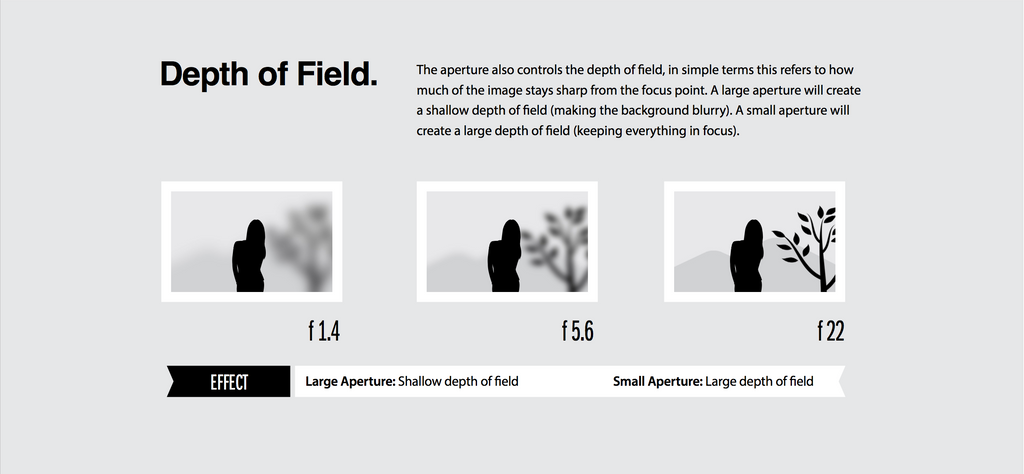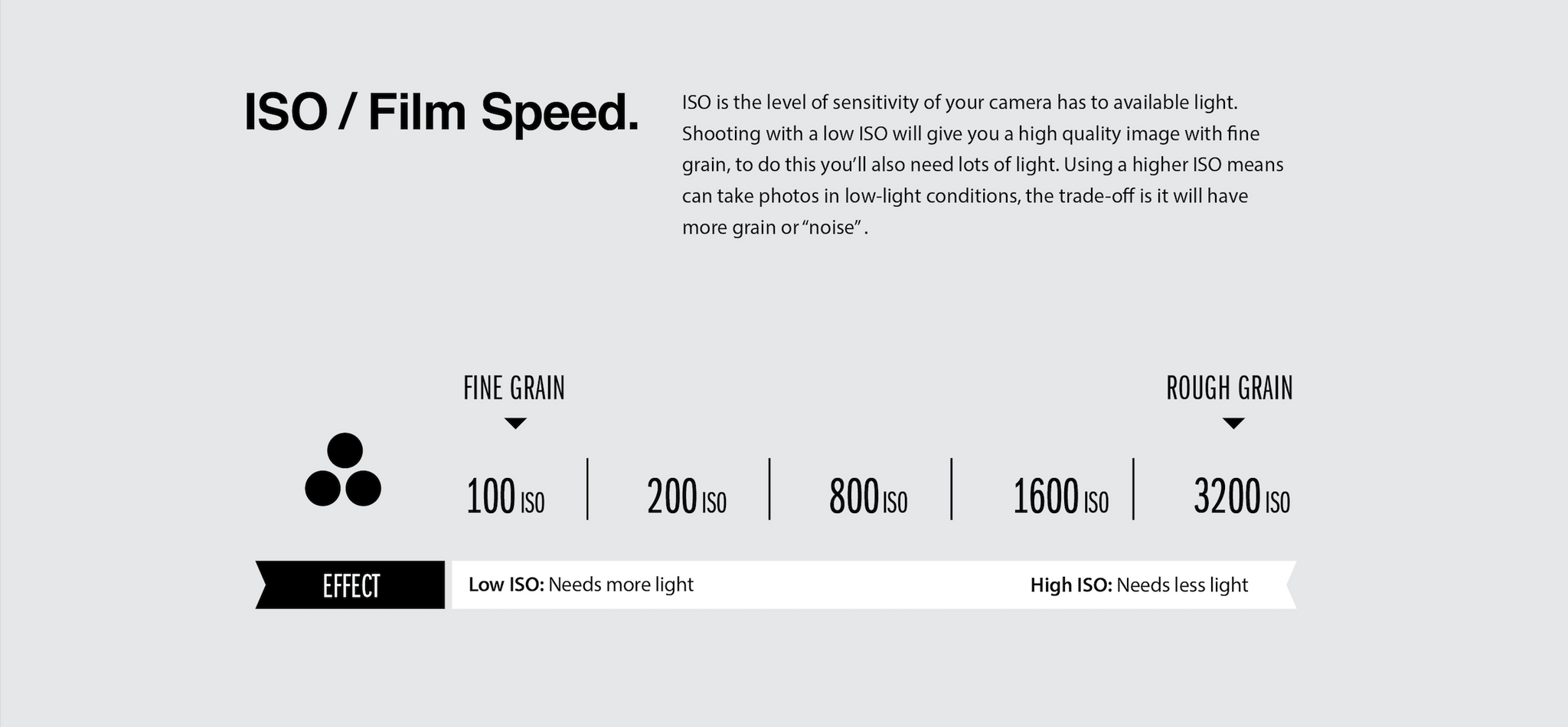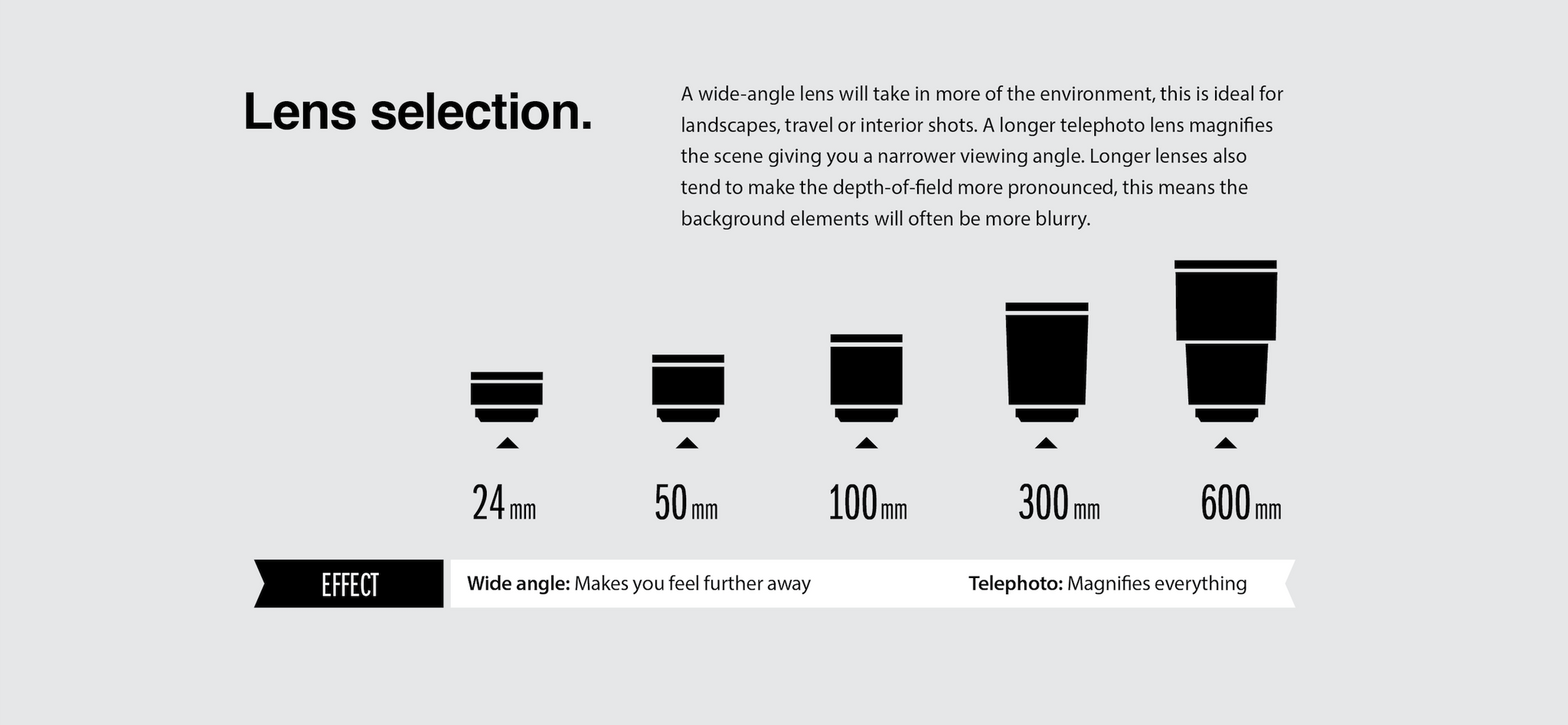Camera Basics Summary
Aperture
The aperture is an adjustable hole in the lens which lets light into the camera. It can be adjusted to vary the amount of light on the camera sensor. A large aperture lets more light in, and small aperture reduces the amount of light.
Depth of Field
The aperture also controls the depth of field, in simple terms this refers to how much of the image stays sharp from the focus point. A large aperture will create a shallow depth of field (making the background blurry). A small aperture will create a large depth of field (keeping everything in focus).
Shutter Speed
Shutter speed is the length of time the shutter is open allowing light on the camera sensor. This is sometimes called exposure time. A faster shutter speed will freeze action (1/250sec), a slow shutter will allow action to blur (1/15sec).
ISO Film Speed
ISO is the level of sensitivity of your camera has to available light. Shooting with a low ISO will give you a high quality image with fine grain, to do this you’ll also need lots of light. Using a higher ISO means can take photos in low-light conditions, the trade-off is it will have more grain or “noise”.
Lens Selection
A wide-angle lens will take in more of the environment, this is ideal for landscapes, travel or interior shots. A longer telephoto lens magnifies the scene giving you a narrower viewing angle. Longer lenses also tend to make the depth-of-field more pronounced, this means the background elements will often be more blurry.







